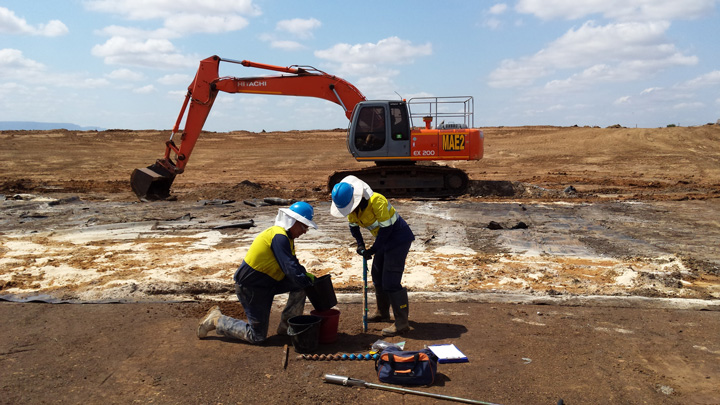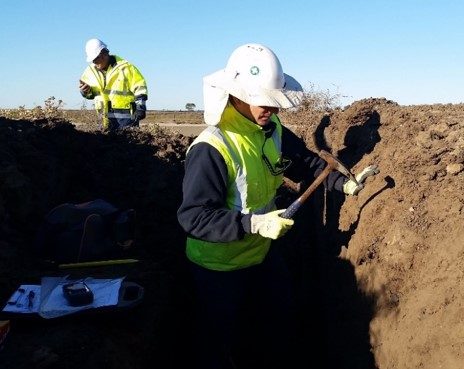Dam restorations find CSG has no lasting impact
Following the innovative rehabilitation of 50 CSG dams in Central Western Queensland, an environmental restoration company found no evidence of contamination above reportable thresholds from beneath the dams.

The main aim of the environmental rehabilitation of CSG dams is to restore sites so they are at least as productive as they were before the dams were constructed. The sites need to ensure there is no subsidence, erosion or contamination and that they can sustain vegetation again.
Land rehabilitation company BeneTerra successfully achieved this outcome on 50 CSG dams across the Surat, Galilee and Bowen Basins, among others, due to its innovative use of soil and water science.
As part of the rehabilitation process, BeneTerra tested each dam site to determine whether or not there was any evidence of contamination from the CSG activities, including CSG-produced water and drilling.
In each of the 50 sites, there was no evidence of any contamination above the thresholds given by the Department of Environment, and various legislative and regulatory requirements, regardless of the dam’s size, location or lining.
In fact, the scientific data gathered showed little difference regardless of whether the dam contained a plastic lining or not. The data also showed that coal seam gas production activities presented little or no risk to the groundwater below the sites.
Water below all contamination limits
Following the removal of the water and dam liner in the restoration process, soil samples were taken from a metre below the dam floor to determine the impacts of the CSG-produced water that was in the dams.
BeneTerra Chief Operating Officer and Business Development Leader, Tony Stapleton, said that out of the 50 dams tested, nothing was found to trigger any contamination limits.
“We sent the samples to laboratories and found no breaches, no triggers, for any of the contamination elements we were searching for. Things like hydrocarbons and heavy metals, which are potentially harmful to the environment, were not present,” Mr Stapleton said.
“We found no contamination above the reportable limits from the dams, regardless of the way they were built, or if they were plastic lined, double-plastic lined, or clay lined.”
 Soil isn’t just dirt
Soil isn’t just dirt
The samples taken from the dams were rigorously tested in scientific labs, and Mr Stapleton said science-based approaches are not only vital for assessing CSG impacts, but are also the key element to the overall success of a dam rehabilitation.
“Dams are basically holes in the ground created by pushing up the soil into surrounding embankments. Typically an earth-moving company will simply try to push in the embankments and fill in the hole as quickly and cheaply as possible, believing that the operator can tell the difference between the soil materials and hoping there’s sufficient topsoil so grass will grow,” Mr Stapleton said.
“By doing it this way, we have observed only a 30 per cent success rate. This is because you cannot tell the soil’s chemistry by looking at it and bulldozer operators can only see the colour of the soil.
“We test the chemistry before, during and after the earthmoving process to ensure we know we are putting the right soil in the right place.”
Mr Stapleton said BeneTerra’s approach was based around soil and water science, where it analysed how the dams had been built and found out where each of the different soil elements came from.
“Then we can reconstruct the soil profile and make it as similar to the native surroundings as possible, which gives the site a much higher chance of regenerating and sustaining vegetation cover and therefore being returned to the same or better condition than existed before the dam was built,” Mr Stapleton said.
To date, this approach has had a 100 per cent success rate for BeneTerra and has allowed dam operators to hand sites back to landholders within a couple of years, saving the ongoing cost of maintenance, regulatory compliance and compensation.
Science-based approach reduces costs
Mr Stapleton said detailed soil sampling and laboratory analysis performed prior to commencing a job could also provide a significant reduction in costs for CSG dam operators.
“We use a scientific approach in the beginning that allows us to be a lot more efficient in terms of what machines we need, what steps need to be taken and how we can get the job done efficiently.
“Having everything backed up by science also removes the risk of other costs coming up further down the track due to the site not being restored properly.
“If you put the wrong soil anywhere close to the surface in your deconstruction process, it will create a scar on that site forever. In order to not do that, you need to really understand the soil chemistry and structure before you start,” Mr Stapleton said.
Wade Elofson, the founder of Powered, an Australian energy and resource-focused business development company that works with BeneTerra to connect them with large CSG producers, said BeneTerra’s approach was making environmental rehabilitations more efficient.
“The main challenges with the restoration of CSG dams are the lack of topsoil in Queensland, dealing with plastic dam liners, and the potential impacts of the saline CSG water.
“Analysing the soil before starting rehabilitation work allows the soil horizons to be put back where they need to be, and in regards to the plastic, BeneTerra developed a tool that cuts the plastic into strips that can be recycled – reducing an eight man day job down to four hours.
“The most interesting finding from this series of projects is that the impact of CSG associated water on the landscape is actually quite low.
“It has also shown that the sites of CSG dams can be successfully restored to what they were before the dam was built, with no lasting impact.”


